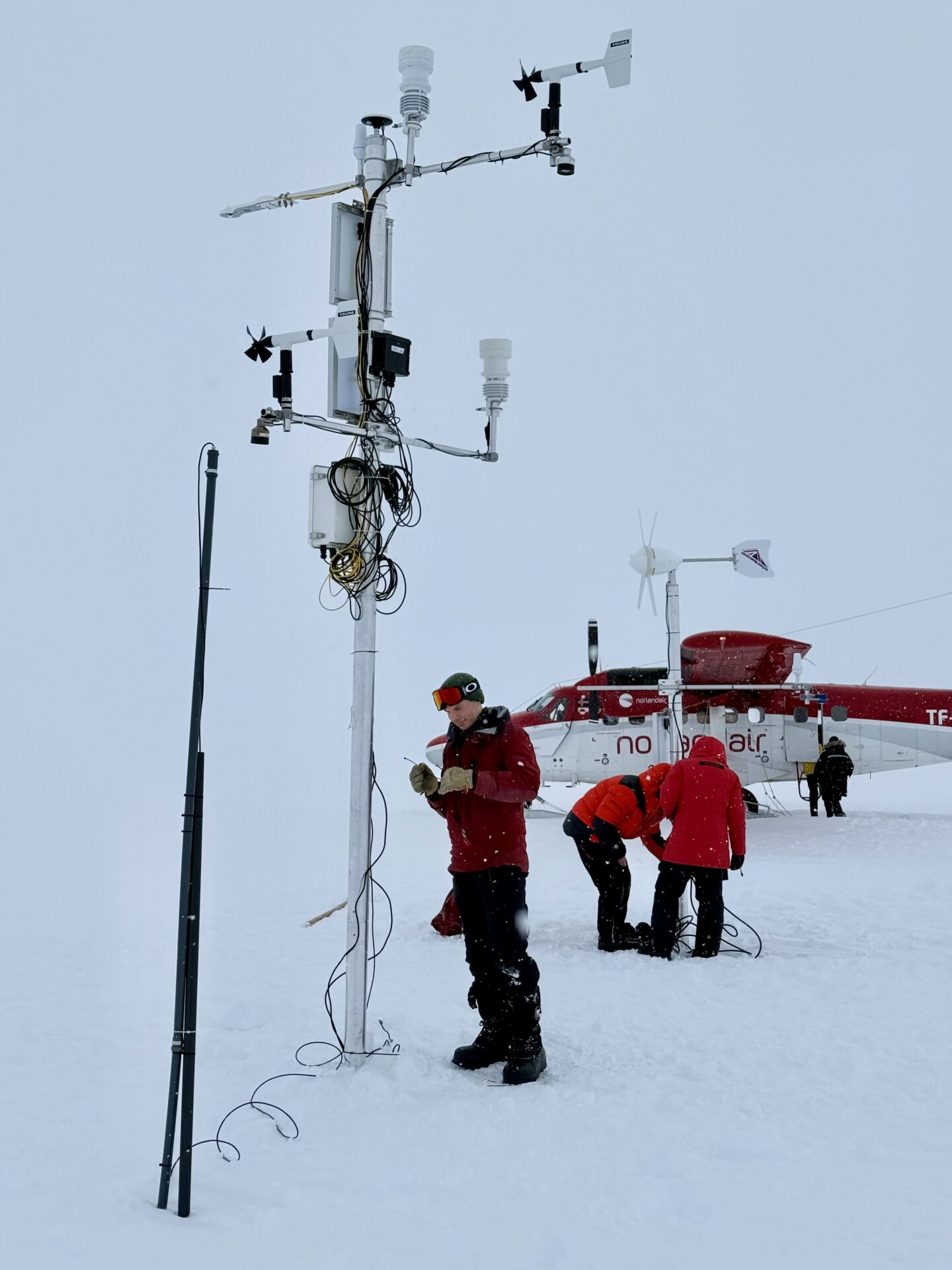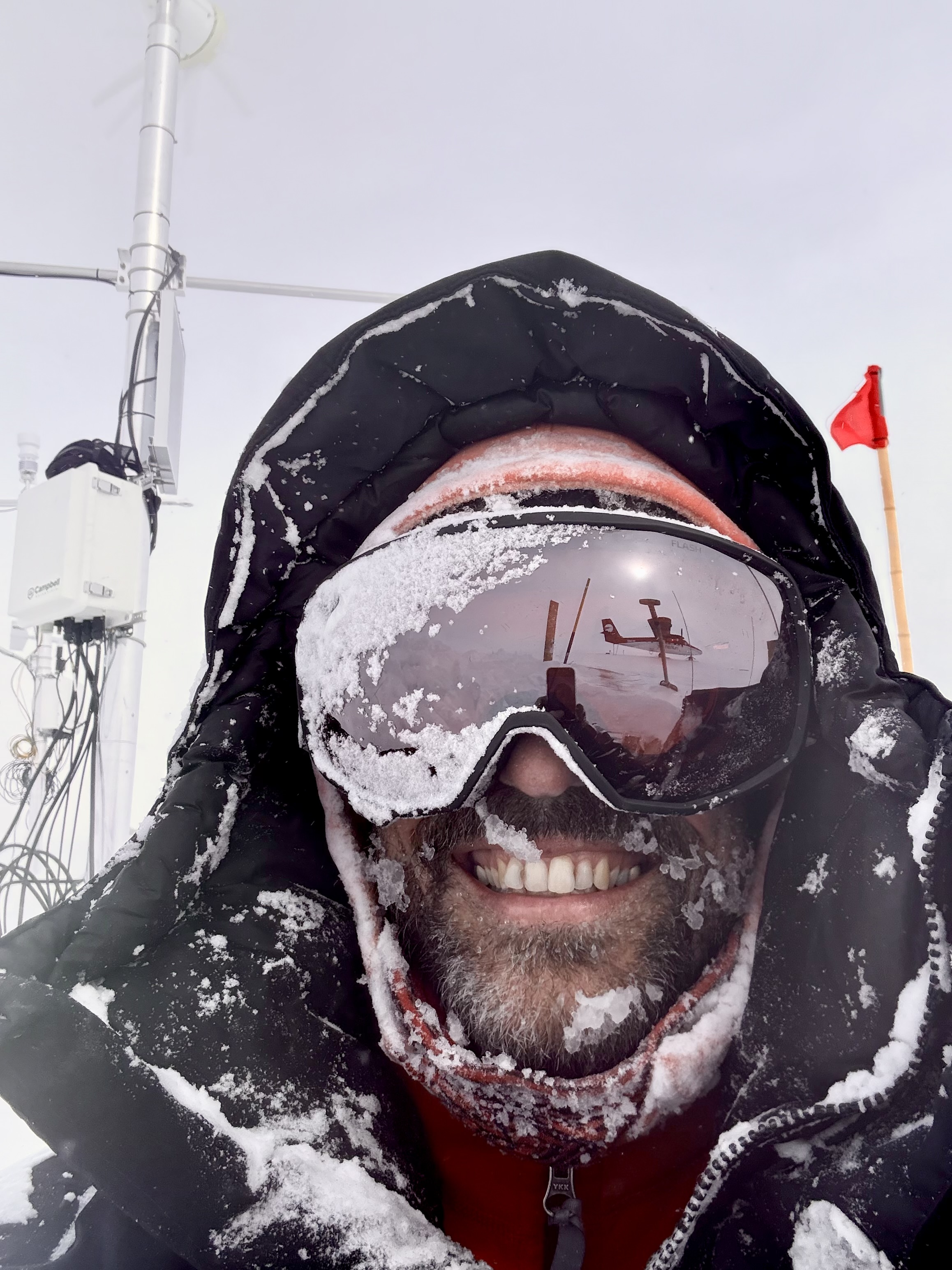As part of the LIQUIDICE project, GEUS glaciologists are currently at a field campaign at the DYE-2 site on the Greenland Ice Sheet, located in the Kangerlussuaq catchment. These efforts are vital for improving our understanding of surface mass balance and the ice sheet’s contribution to global sea level rise.
Thermistor String Installed to Monitor Snow and Firn Temperatures
Baptiste Vandecrux finalized the installation of a 10-meter-deep thermistor string—visible as the dark grey tube in front of the instrument setup. This device measures the temperature of snow and firn layers at multiple depths and transmits the data hourly via the local weather station.
“These temperature profiles are essential for validating the models we use to understand snow melt, refreezing, and water percolation,” explains Baptiste. “Having real-time, high-resolution data allows us to better simulate how the ice sheet responds to warming.”
Manual Snow Density Measurements to Calibrate SWE Instruments
Meanwhile, Andreas Ahlstrøm conducted snow density measurements by hand, digging snow pits and collecting data to validate snow accumulation models and support calibration of new advanced automatic snow-water-equivalent (SWE) instruments soon to be deployed across the ice sheet.
“It was a tough day,” Andreas recounts. “With blowing snow covering my notebook as soon as I opened it, I had to dig out the pit three times just to keep working. But these measurements—knowing exactly how much snow has fallen—are absolutely essential for getting the big picture right.”


Ground Truth for Climate Models
Together, these field activities provide crucial ground-truth data to improve the accuracy of mass balance and hydrological models within LIQUIDICE. The combination of continuous sensor data and manual measurements ensures that new technologies are both reliable and scientifically robust.
Stay tuned for more updates as the LIQUIDICE team continues fieldwork and data analysis through the 2025 season.